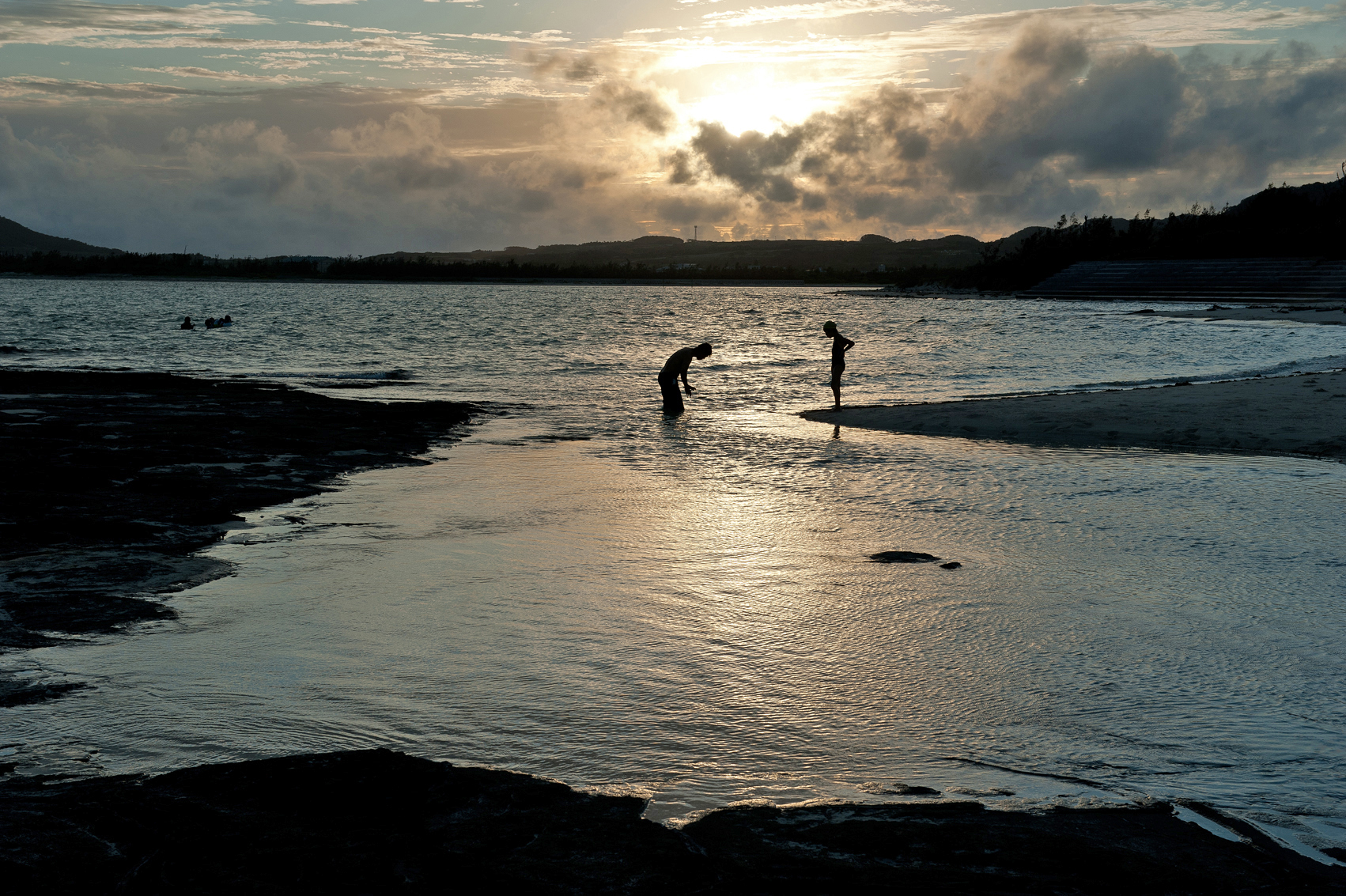It didn't take long for a seasoned group of truck drivers to stake their claim to the best seats in the house or, in this case, ferry. They positioned themselves on tiny plastic seats at the rear of the open deck as the ferry left Tomari Port in Naha City, Okinawa, bound for the island of Kumejima. More like saucers than chairs these outdoor seats are worth bearing for the fresh sea breezes, though you will also have to endure the roar of the ship's rear engines.
An hour or two into the journey, the sunlight and lilting motion of the ship had turned half its passengers into somnambulists, the remainder divided into camera buffs, fresh-air fiends or pallid ghosts ready to reach for their sick bags.
Eruptions of green, tropical scree regularly appeared on the port side of the ship, the smothered rocks and cliffs supporting no inhabitants, strips of virgin coral sand remaining untrodden. In trendy parlance Okinawa is often talked about as a place of healing, but if you have visited the main island — with its military bases, fast food joints, servicemen bars, launderettes, cement levees and grinding traffic — you will know better. What nourishes the soul in these outer marine regions of Okinawa is silence and emptiness; the primacy of nature in this fertile void is genuinely revitalizing.


















With your current subscription plan you can comment on stories. However, before writing your first comment, please create a display name in the Profile section of your subscriber account page.